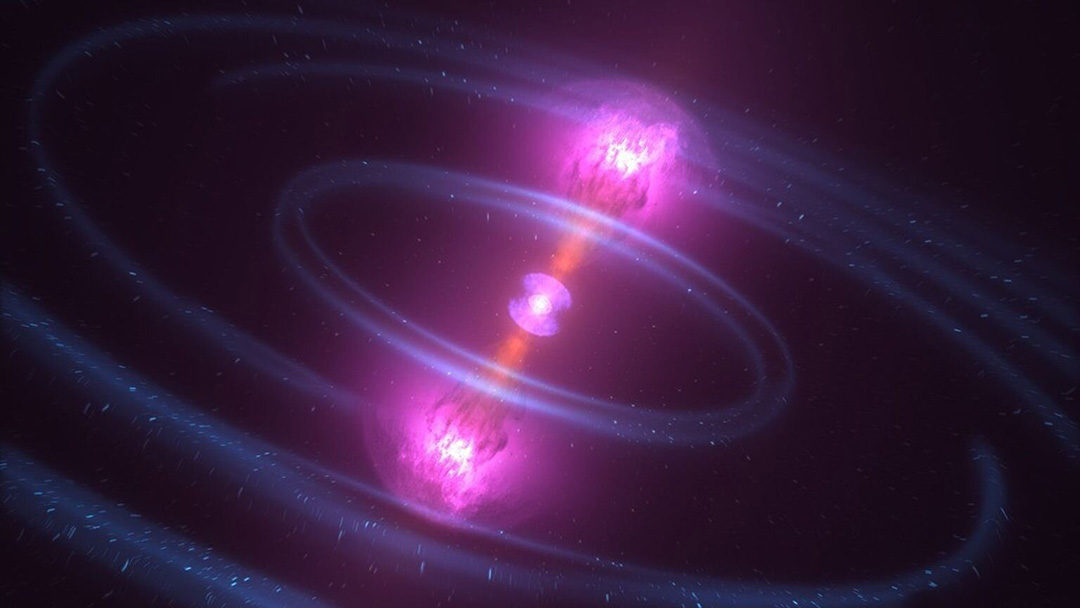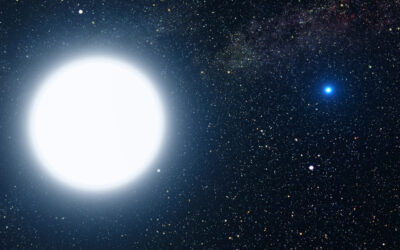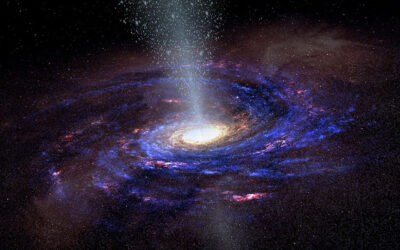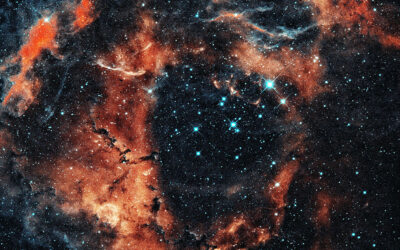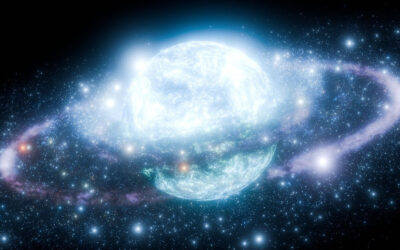A new study has revealed intriguing details about the star HD 65907, which appears younger and hotter than expected for its age. Astronomers have discovered that this star, known as a rare field blue straggler, may have formed from the merger of two older stars.
By analyzing its chemical composition, a team of astronomers has presented compelling evidence for this dramatic event. The findings, published in Astronomy and Astrophysics, offer new insights into how such stars evolve and provide a new means for investigating this mysterious population of blue stragglers.
The mystery of blue stragglers
Field blue stragglers are a peculiar class of stars. Unlike typical blue stragglers found in dense star clusters, these stars exist in relative isolation, far from other stars. They are puzzling because they don’t follow the usual rules of star evolution, appearing hotter, brighter, and younger than they should.
HD 65907, located approximately 307 light-years away from Earth in the constellation Carina, is a particularly well-known example of this star type.
Based on its surface temperature and intrinsic brightness, HD 65907 appears to be about 5 billion years old, similar to the Sun. However, its chemical composition indicates that the star is significantly older — a striking contradiction. The determination of this older age comes from the scarcity of heavy elements, or ‘metals,’ in the star’s atmosphere.
Shortly after the Big Bang, the universe was composed almost entirely of hydrogen and helium. The elements with more complex and heavier nuclei only began to form later through nuclear fusion in the cores of massive stars. These heavy elements were then released into the cosmos during supernova explosions, enriching the material available for the formation of new stars. Stars that formed earlier contain fewer metals because they emerged in a universe that had not yet undergone significant chemical enrichment.
By analyzing HD 65907’s spectrum, scientists identified its metal-poor composition, which aligns with an age of approximately 11 billion years. This discrepancy between the two age estimates prompted researchers to investigate the star’s unusual chemical profile more closely.
Elemental clues to a star’s history
To solve the puzzle, researchers turned to two elements: lithium and beryllium. These elements are particularly sensitive to the high temperatures in a star’s interior because they are easily destroyed at elevated temperatures during stellar evolution. As stars evolve, these elements are gradually depleted, making them valuable indicators of the star’s thermal history.
By analyzing the amounts of lithium and beryllium in HD 65907, the team hoped to uncover evidence of processes that might explain its contradictory characteristics. Other elements were not used because they are less sensitive to the specific temperature conditions that would reveal such insights.
To measure lithium, the team used data from the High Accuracy Radial Velocity Planet Searcher (HARPS) spectrograph at the European Southern Observatory (ESO). The spectrograph detects the light emitted or absorbed by specific elements at particular wavelengths. Since each element has a unique ‘fingerprint’ in the spectrum, astronomers can determine its abundance by studying these patterns.
The results for HD 65907 were striking: the star contains six times less lithium than the Sun and fifty times less than stars of a similar age and type. “This star has low lithium abundances,” the team wrote in their paper. “These low lithium abundances cannot be explained regardless of whether we consider it a [young or an older star].”
In simple terms, the star’s lithium levels are too low for either of the main stellar populations — population I stars, which are younger and rich in heavy elements, or population II stars, which are older and metal-poor. This extreme depletion hinted at an extraordinary past event that heated the star, burning off its lithium.
One possible explanation is that the star transferred material from a cloud of interstellar gas. Another possibility is that it has or had a companion star, from which it either transferred material or merged completely. These phenomena would raise the star’s temperature, enabling it to burn off its lithium. However, a merger would lead to a much more significant temperature increase, potentially allowing the star to burn beryllium as well.
“If the star is beryllium-poor, it is likely a result of an interaction with a companion,” the researchers wrote. “A small beryllium depletion would be consistent with mass transfer, whereas a large depletion could only be explained by enhanced internal mixing due to […] a merger, during which temperatures would reach extreme values. A large depletion would also rule out the possibility that the rejuvenation of this star was due to an encounter with the […] cloud.”
To find out what happened, the team examined the ultraviolet spectrum of HD 65907 using ESO’s Ultraviolet and Visual Echelle Spectrograph (UVES), and found that the star’s beryllium levels were depleted by at least a factor of 15 compared to the Sun.
The merger hypothesis gains ground
The severe depletion of both lithium and beryllium left only one plausible explanation: HD 65907 is the result of a stellar merger. In such an event, two stars collide and combine into a single star. The immense energy released during the merger heats the star’s material to extreme temperatures, destroying certain elements, like lithium and beryllium, in the process.
Further evidence supported this scenario. The team analyzed HD 65907’s velocity — the small changes in a star’s motion that could indicate the gravitational pull of a companion star. No evidence of a companion was found and infrared observations revealed the presence of a cool debris disk surrounding HD 65907. This disk, with a temperature of just 30 Kelvin (-243°C), is likely the remnants of the other star involved in the merger. Such disks are rare and suggestive of violent collisions between celestial bodies.
“The low lithium and beryllium abundances, in addition to the lack of evidence for a companion, are strong pieces of evidence in favor of the stellar merger scenario,” the researchers concluded.
HD 65907’s unusual history not only explains its peculiar properties but also offers a new way to study blue stragglers. The simultaneous measurement of lithium and beryllium abundances, combined with other observational techniques, could help astronomers better understand the origins and evolution of these enigmatic stars.
While they are commonly found in clusters, field blue stragglers like HD 65907 are particularly rare and difficult to study. By developing tools to investigate their chemical fingerprints, researchers hope to unravel the stories of other stars that defy conventional explanations.
Reference: A. Rathsam, J. Meléndez, and A. I. Karakas, Beryllium: The smoking gun of a rejuvenated star, Astronomy and Astrophysics (2025). DOI: 10.1051/0004-6361/202451197
Feature image credit: NASA’s Goddard Space Flight Center/CI Lab

